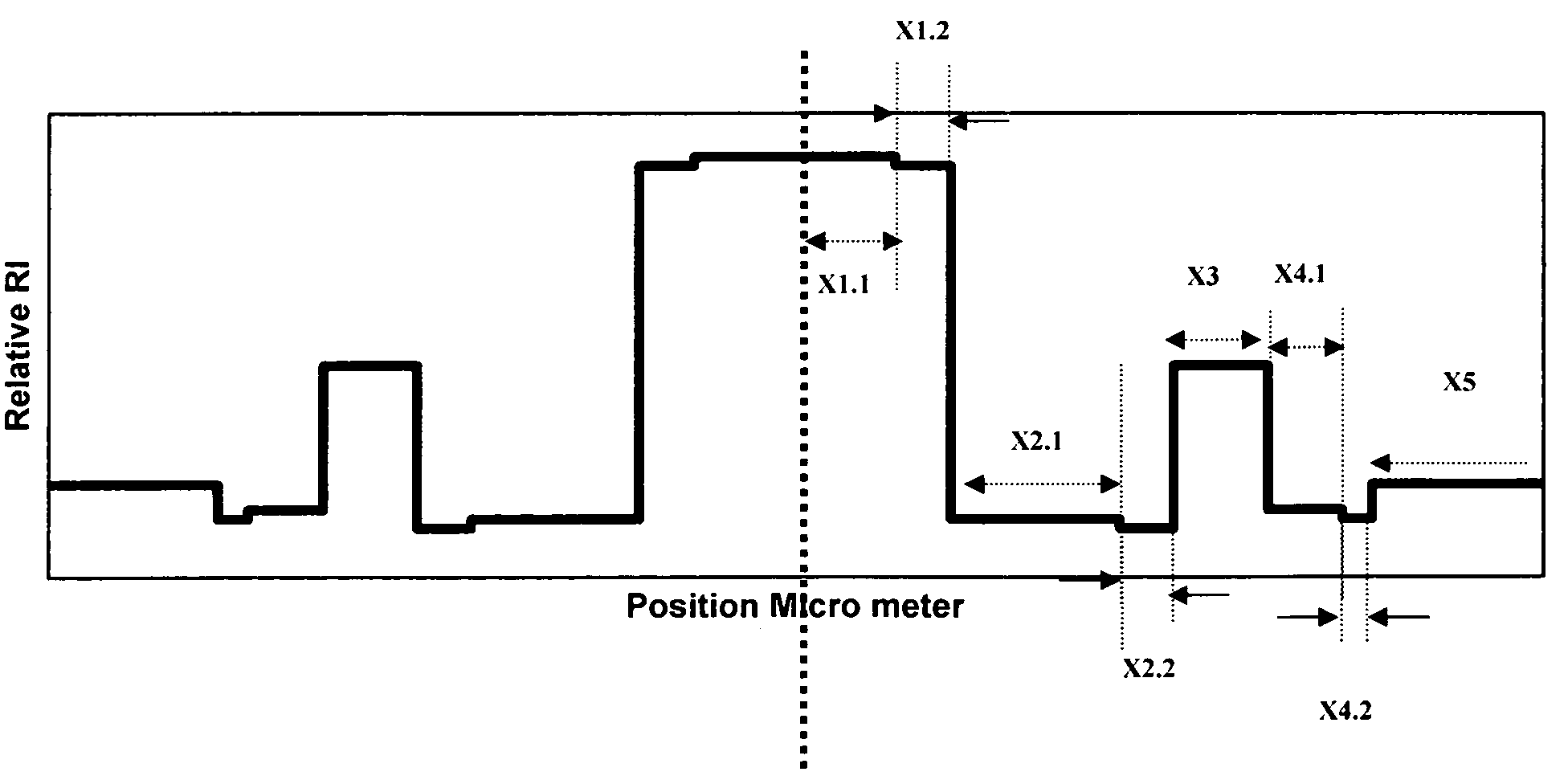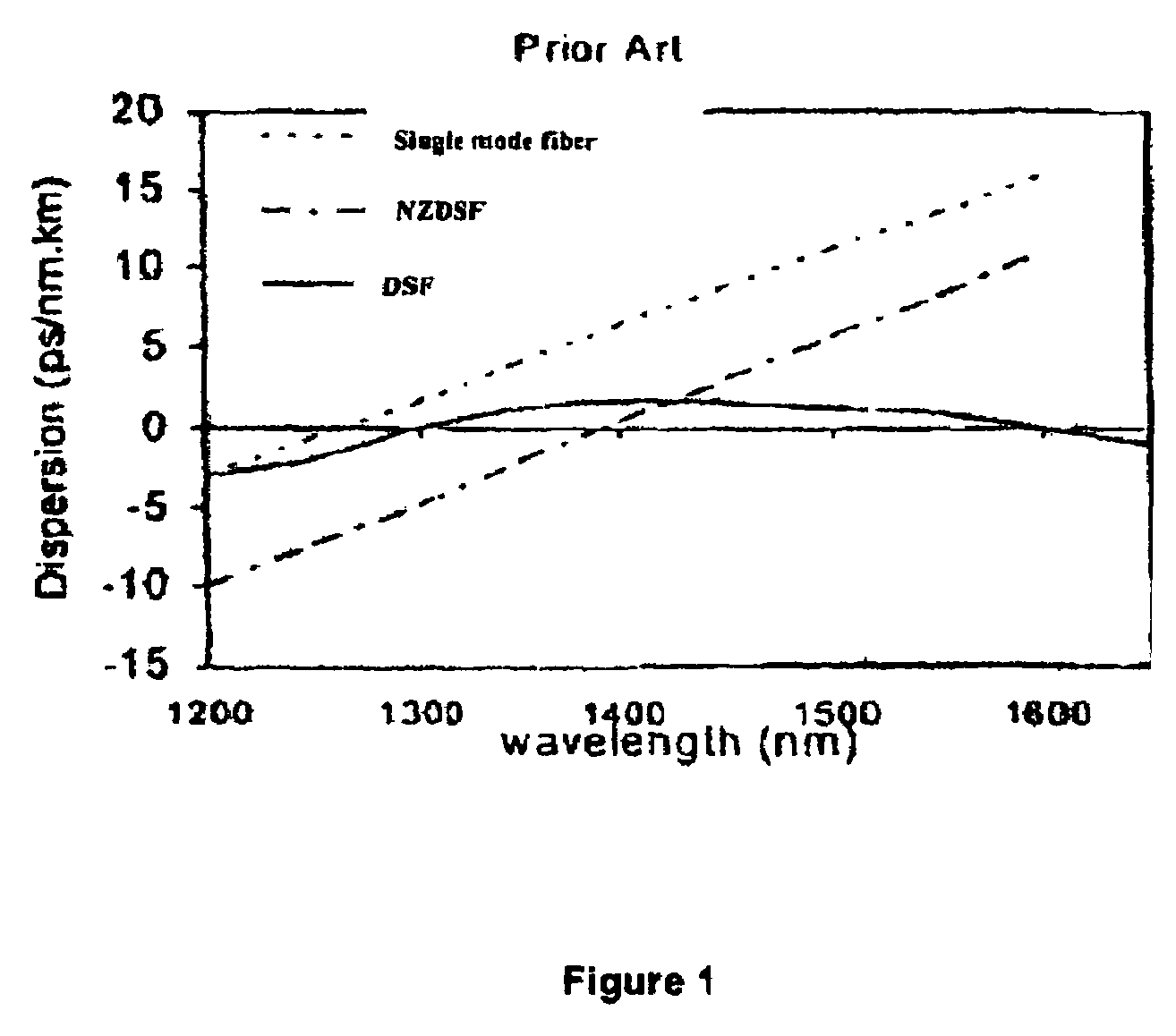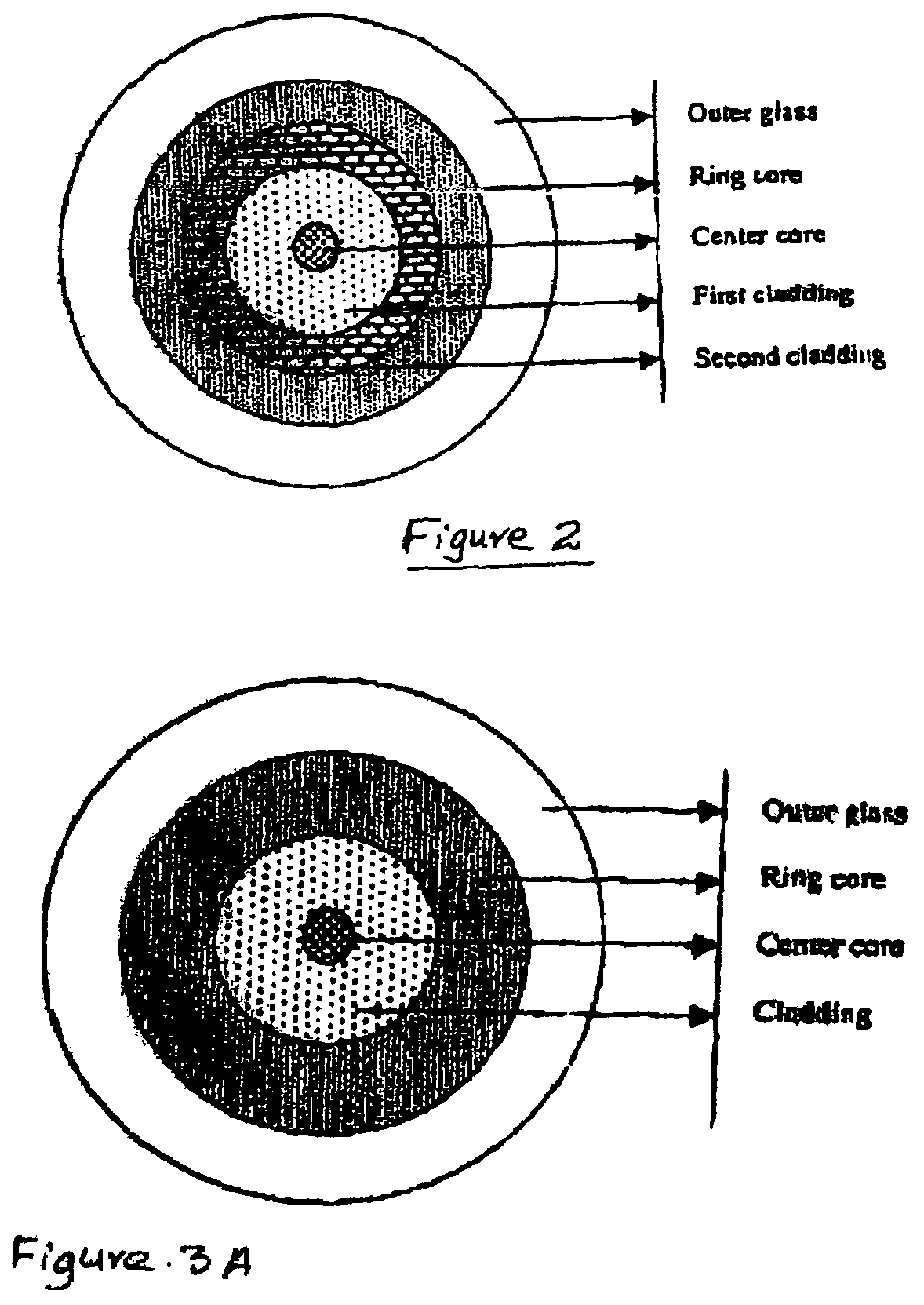Dispersion optimized optical fiber for wideband optical transmission
a wideband optical transmission and optical fiber technology, applied in the field of optical fiber wideband transmission, can solve the problems of limiting higher bit rate transmission, single-mode fibers with very high dispersion loss, and low dispersion slope, and achieve low dispersion slope and high effective area. , the effect of low dispersion slop
- Summary
- Abstract
- Description
- Claims
- Application Information
AI Technical Summary
Benefits of technology
Problems solved by technology
Method used
Image
Examples
Embodiment Construction
[0051]Now referring to accompanying FIG. 4, in accordance with the present invention a disclosed optical fiber, comprises a centre core 1, inner cladding 2, a ring core 3, outer cladding 4 and the outer glass region 5, characterized in that inner cladding 2 is provided onto the outer periphery of the centre core 1, and ring core 3 is provided onto outer periphery of the inner cladding 2 and the outer cladding 4 is provided onto outer periphery of the ring core 3, and the outer glass region 5 surrounds the outer cladding 4.
[0052]According to the present invention the refractive indices of various regions of the presently disclosed fiber are related in a manner that the centre core 1 and the ring core 3 have higher refractive indices than that of the outer glass region 5, and the inner cladding 2 surrounding the center core 1 and the outer cladding 4 surrounding the ring core 3 have lower refractive indices than that of the outer glass region 5.
[0053]In accordance with one embodiment ...
PUM
 Login to View More
Login to View More Abstract
Description
Claims
Application Information
 Login to View More
Login to View More - R&D
- Intellectual Property
- Life Sciences
- Materials
- Tech Scout
- Unparalleled Data Quality
- Higher Quality Content
- 60% Fewer Hallucinations
Browse by: Latest US Patents, China's latest patents, Technical Efficacy Thesaurus, Application Domain, Technology Topic, Popular Technical Reports.
© 2025 PatSnap. All rights reserved.Legal|Privacy policy|Modern Slavery Act Transparency Statement|Sitemap|About US| Contact US: help@patsnap.com



